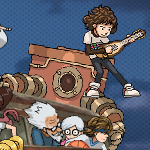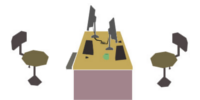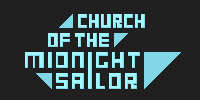Interview: Sol705’s Patricio Land
A throwback to ’90s point-and-click adventure games, Sol705 combines a variety of art styles with South American sci-fi ambiance. With multiple languages supported and music to boot, I chatted with developer Patricio Land on his project and the current Kickstarter campaign.
Erik Meyer: The game’s setting brings players to a small town in Argentina during the 1970s, so I’m interested in what you see defining that time and place; the popularity of flying saucers, for example, seems to come and go like a hairstyle. As someone who grew up in Wisconsin in the ’80s, I have lasting memories of that experience, but what do you see leaving its mark on the lives of your characters in Tucana Lake?
Patricio Land: UFO sightings were quite a thing back in the ’70s and early ’80s (both in the sky and at concerts). There are some heavily documented cases on one side, and then straight-up shameful ones on the other (Visitors from planet Ummo, I still can’t believe that was a thing!). But then again, during that times, the Cold War made us all live in fear of impending doom. With that in mind, staring at the sky and looking for some hope in the stars doesn’t really sound like a dumb idea. The Tucana Lake kids find themselves living in those crazy times, at the mercy of the lack of information, half truths, and false stories, all fluttering around their heads. There’s a lot they can’t corroborate, and that anything appears possible, even what they see on movies or TV! Films like ‘Close Encounters of the 3rd Kind’ fed our wildest fantasies about the possibility of creatures from above to bring us peace or, at least, an alternative path.

EM: The combination of pixel art and more realistic imagery makes for an interesting mash-up, so how did you arrive at this melding of visual elements? Do you see the ’70s as a less digitized time and take your aesthetic from popular consumer goods/publications, or do other, more nuanced insights play a large role in your look?
PL: I remember that back then, action transfers (rub-on transfers, or ‘Kalkitos’ for us, Argentinians) were an endless source of fun; printed cardboard background images and a transparent sheet of colored dry transfer figures allowed you to apply them with some friction and were the equivalent of the adventure games that came out later, serving as a source of inspiration. Sol705’s aesthetic is based on the contrast between the hyper realistic backgrounds and the slightly brighter and colorful characters on the sheet (which came out pretty well, if may I say so myself).
EM: As a developer, how do you define the modality of point-and-click adventures, and how are these modes/methods best met within the game experience? Where do you think games like yours shine, as opposed to action sidescrollers, games relying on complex puzzles/minigames, or isometric adventure titles?
PL: I think point-and-click graphic adventures ‘clicked’ (heh) with people who were less about action and more into adventure. Not everyone has the reflexes or the skill for platformers, racing games, or shooters, but anyone can enjoy a good story, and graphic adventures gave you not only that, but also a world to explore at your own peace, filled with puzzles and riddles that you could focus on solving without (well, most of the time) serious consequences if you failed. Like an interactive book where you could immerse yourself for hours and hours with only the minor inconvenience of sometimes ending up pixel hunting or getting stuck in a try-n-error loop to solve particularly hard puzzles, since, back in the day, the internet didn’t exist and the only help you could get was a friend or two who shared the same passion for graphic adventures. There was a bright side: friendly teasing was the closest thing to troll-hate you could possibly get. Another type of games which appears to have a small audience nowadays are the isometric adventures from the times of the Spectrum, like Jon Ritman’s games (Batman, Head over Heels) or the ones made with Ultimate, which is a shame, since they were amazing! I’d love to make one someday.
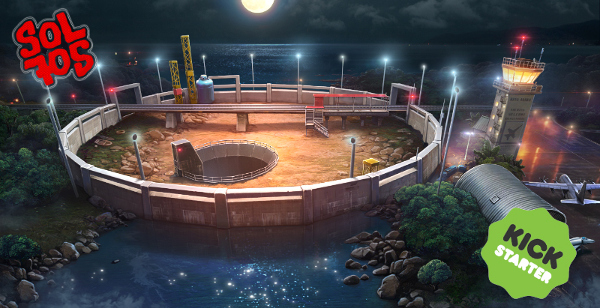
EM: I usually find that smaller details are what bring depth to an experience, like your reference to Carl Sagan or the inclusion of chain link fences topped with razorwire in parts of the town, so when you address the task of making an experience feel genuine, what does your content and game asset selection process look like?
PL: My working methodology begins with writing a very simple script with the major points of the story. From that point, I make every scene as if I were building some kind of interactive diorama, placing characters, imagining situations, and testing interactions. Not only is this quite fun, it also helps me remember how things were in the ’70s, so I could use it as a reference: Believe it or not, I LIVED the ’70s… sort of. I was pretty small, but I can still remember things from back then! Elementary school, for example. In the game, this was supposed to be a lot smaller until I remembered school experiences from back in the day. So I adding a few extra details here and there.
And speaking about extra stuff: the famous astronomer ‘cameo’ was a must (as you can see in the demo), since he left such a strong impression in the youth of my generation, myself included. And yes, I know Cosmos is technically from the ’80s, but being a work of fiction and all, a few… historical liberties can be taken. I mean, the game is a costumbrista tale with hints of sci-fi and adventure, not exactly something that will make me the next Hobsbawn. However these little deviations do allow me to add a dash of flavor to the story (plus, they are just so much fun!). It made me really happy how well received the cameo was among the players, especially because it won’t be the last!
EM: You’ve released the first chapter of the game for free, so I’m curious about the responses you’ve gotten from the community and how you see the released content fitting in with your overall development arc; I personally love that indie games are increasingly providing demos to interested fans, but as developers, what kinds of feedback/promotional/social media lessons have come along for the ride?
PL: I released the first chapter for free because, well, it was like a demo, or an introductory chapter. When you release a demo for a new game few people know about, you do it to test the waters, so to speak. Luckily, the game was really well received, and many people shared with me how much they like the characters, the story, and a bunch of other things. There were, however, people who complained about the game not being available in their language, or being too short… and the fact that some of them look genuinely angry left me baffled. I mean, I understand if people don’t like it and then leave a comment about why, that makes perfect sense. But these demands, in particular, looked like they were written by someone who don’t realize that behind games there are hard-working people trying their best… It’s like they think that, instead, there is some kind of magic algorithm that immediately generates content. A really messed up situation.
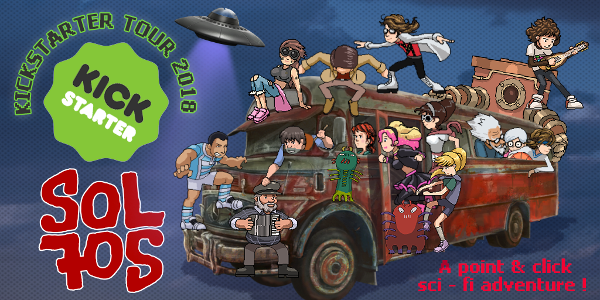
EM: You’re launching a Kickstarter campaign, so in following from the last question, what do you see as essential on your to-do list for the crowdfunding effort? While I see a fair number of games doing well via that platform, I also see some cool projects failing to meet their goals. Similarly, there are other sites (Fig, Indiegogo, and others) providing alternatives, so can you describe your view of the indie game space?
PL: I had to do a lot of research before launching the campaign. It wasn’t something improvised; I prepared the content for a month and a half and I got advised the best way I could: there are some pretty good online classes with valuable information and many people willing to help you. These preparations were fundamental. And yet, I’ve been on the run till the last second, editing the presentation video and balancing the rewards, since $10 dollars can be a lot of money for some South American countries, and you gotta make it worth it. It felt like solving a puzzle until the last minute.
My advice, from what I’ve learned so far, is that you study other campaigns and prepare a long list of email contacts (especially from the press). Socials networks are fine for likes and diffusion but they are not enough.
All this should be done with anticipation, never on the run, because time passes and the algorithms of this society we live in can be quite merciless. For a campaign to succeed, you should also make some noise about it for like the first 2 or 3 days. At the same time, your product should be defined as much as possible (half-baked ideas never make it). Is your product different from the rest? It is aimed at a particular audience? Or does it at least cover a specific need? Why would people put money on a game beforehand when they could buy it later on a Steam sale? Pretty sad, I know, but things these days are different and games are now something we are no longer short of!
EM: Maintaining balance between storylines and gameplay constitutes a huge execution hurdle that separates many seasoned studios from novice enthusiast devs; a lack of balance can easily interrupt the flow of a game. As you push ahead with your work, where are your thoughts regarding the experiences you’re excited to give and the translation of that vision into the final product?
PL: Fun and full of surprises: that’s how I wanted this story to be. And that’s why the nostalgic atmosphere in Sol705 is not what you get when you experience something good that you can’t return to, but rather hits you like a sugar rush when you open one of the boxes filled with cool junk in your grandparents’ basement. And that’s what the demo release felt like to me. Like I only shared one box of many. And that desire to share the rest with all of you motivated me not only to keep working on the game but to launch the Kickstarter campaign, as well! I look forward to showing what else is in store and blowing minds, or, at least, to providing a few nice afternoons.
In case you missed it, here’s the trailer:

